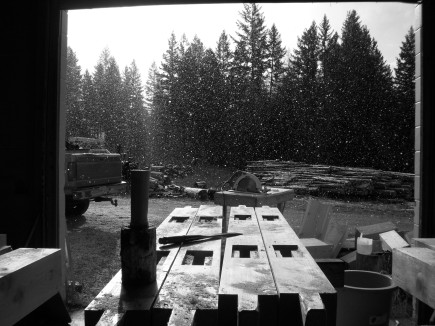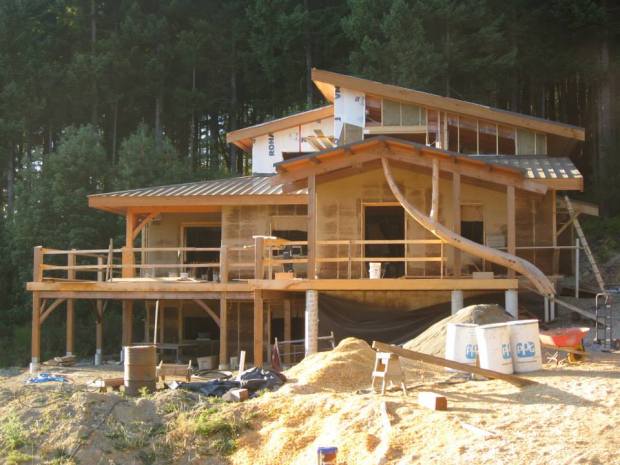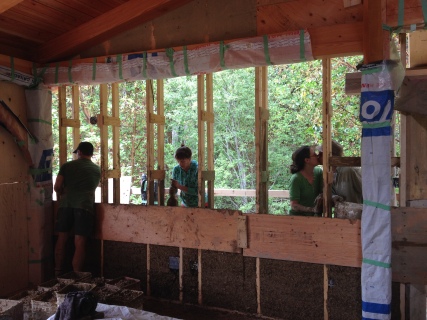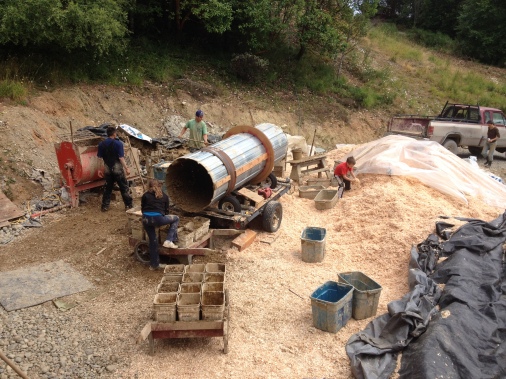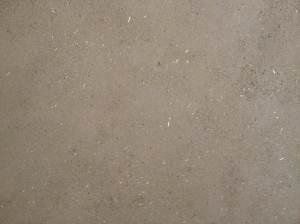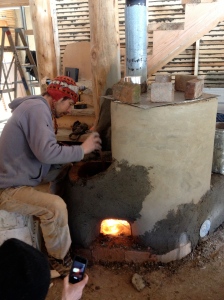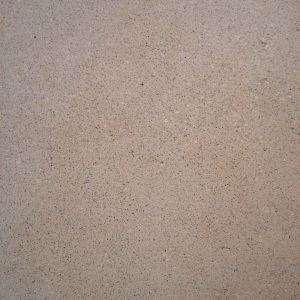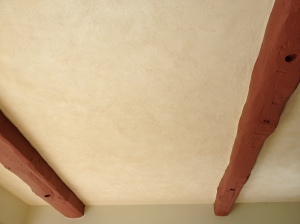I love timber framing. If I could do it for a living, I would. Why don’t you do it then you ask? Well there isn’t much happening around these parts, and I am too green to do it on my own. There aren’t many companies and it’s just not that big in these parts. There is more in the Kootenays (in the mountains of British Columbia) which is where I got my education in timber framing and where I worked for my friend Neil McDonald of Hawthorn Timber Frames in Kimberley, BC. He would do layout and my wool sweater would get permeated with wood chips.

Neil McDonald of Hawthorn Timber Frames
In the Natural Building Program in Kimberley, BC we had a one-week timber frame workshop where we cut a little frame for the tool shed we were building. Very fancy tool shed! Anyways I loved that part so much that I decided to do the 13-week Timber Frame Program right after. It was super fun, I loved it, and it was completely funded by the Women in Trades Program of BCCA. (BC Construction Association). The wood, it was so big. So burly. So sexy. I could hew a log into a square timber with an axe just as fast as my classmates (who were all men). It was great. And my wonderful instructor, Joe Gex-Collett, who is still teaching there, is hilarious. The course should be 6 months instead of 13 weeks.
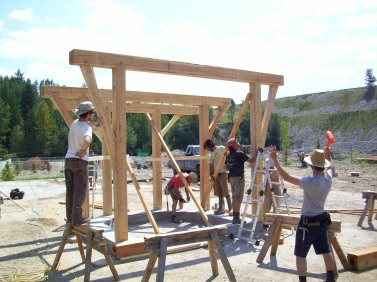
Timber Frame workshop 2009 in Kimberley, BC with COTR

Fall 2009 Timber Frame Program at College of the Rockies in Cranbrook, BC
At OUR Ecovillage I had the opportunity to lead a TF project, which was amazing! One thing I heard during my time there was “this is the best place to make mistakes” and that is a very true statement. I made mistakes! How else do you learn? I got my knee braces wrong (only a teensy bit) and I CUT A BEAM TOO SHORT. Yep. Don’t cut your beams, people, until you know how long they have to be. Hurrah for me! (I managed to fix it. I found a beam stretcher! I am selling them for $100 so if you want one, message me;)
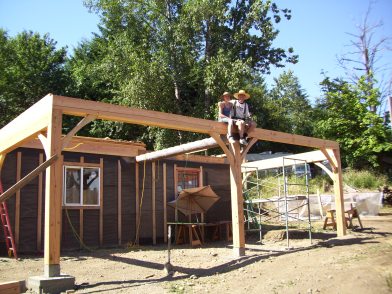
Tom Jensen of Earthen Homes and I at OUR Ecovillage
I did apply with a large, prominent outfit not so long ago. I sent in my delicately crafted resume and cover letter, along with two letters of recommendation. Two. I called, left messages, got nothing back. I went in person with another resume. Still nothing. Sexism? Perhaps. It’s hard not to go there. The only female employees I’ve seen in other shops are oiling. I can only try and not make assumptions, and continue to push to do what I am good at and what I enjoy.

Our frame up and baled in Cranbrook, BC
Anyways. Now I have a very nice, very sharp Behr chisel that doesn’t see a lot of action. I wish she did. I feel out of practice, and I’m losing the language. I try to talk about joinery and I can’t remember the names. It’s kinda sad. I hope one day I get the chance to do some more notching, but for now I will carve another niche for myself.
